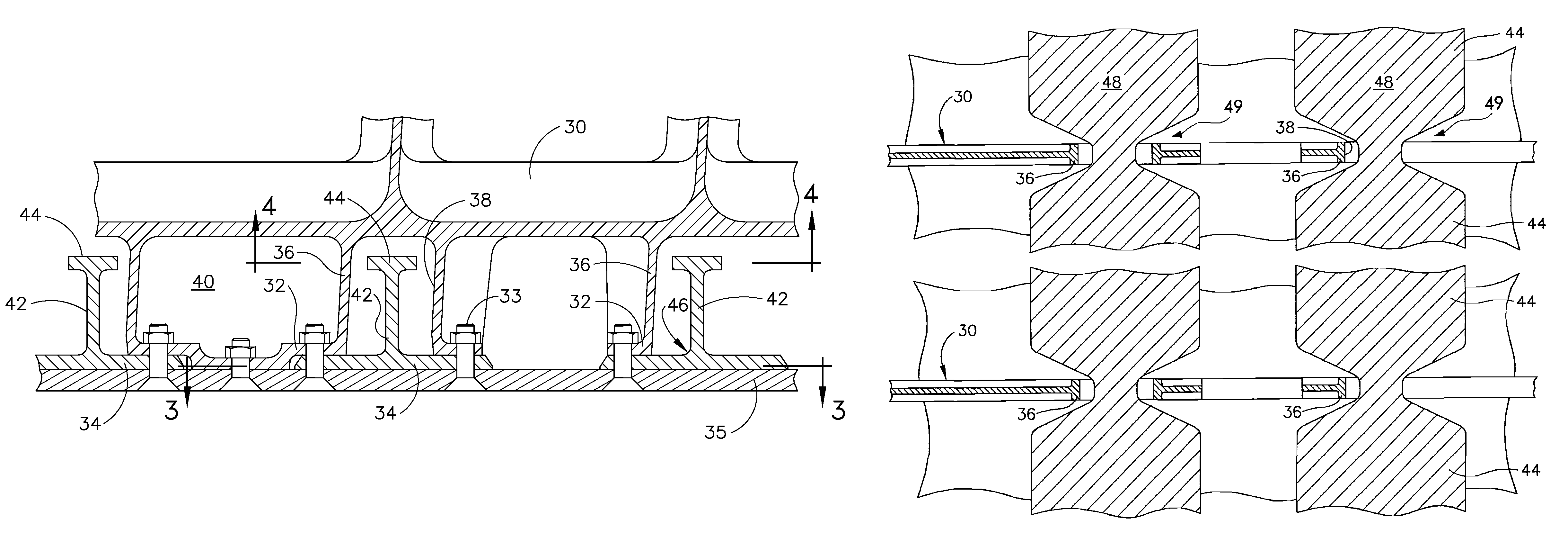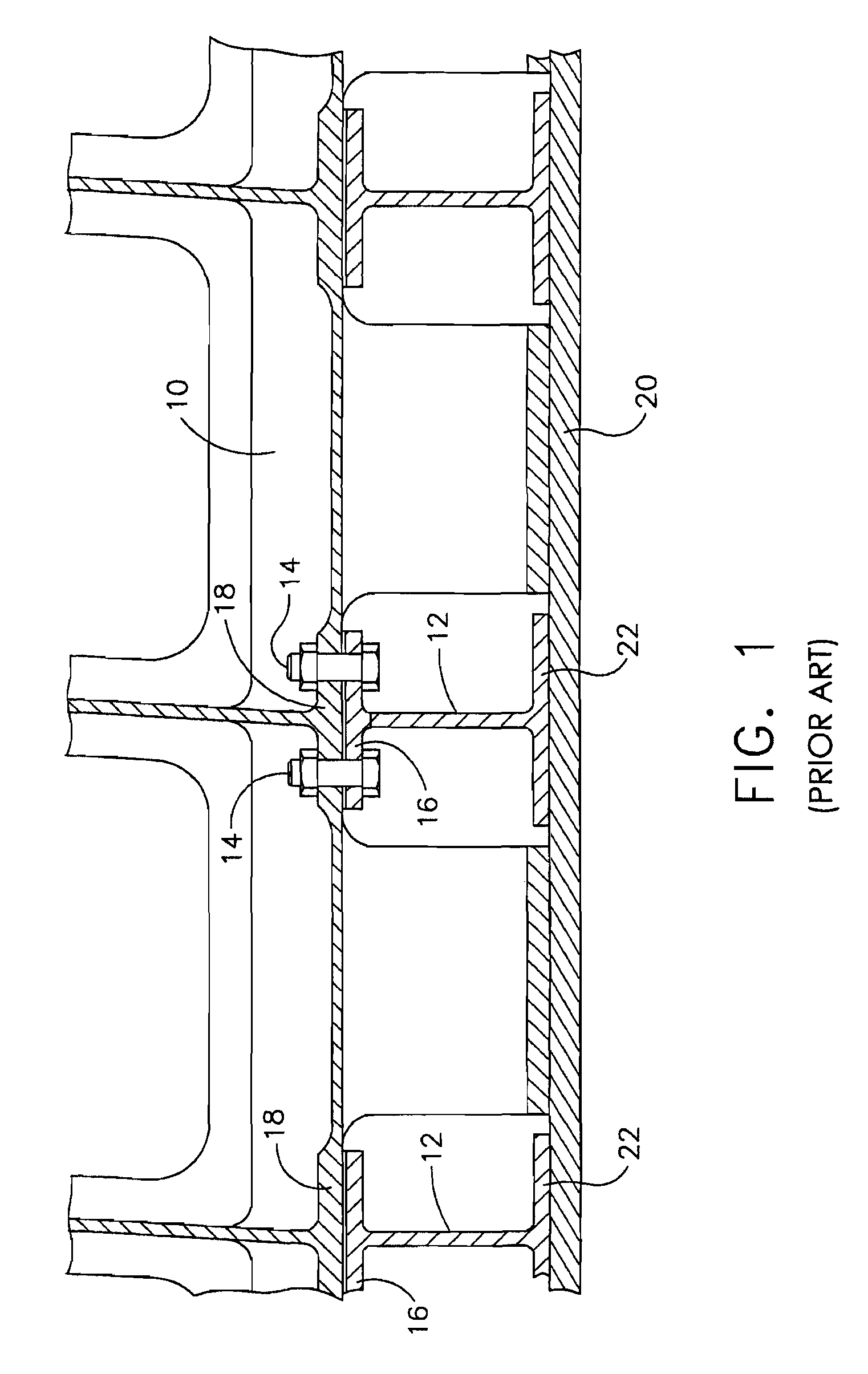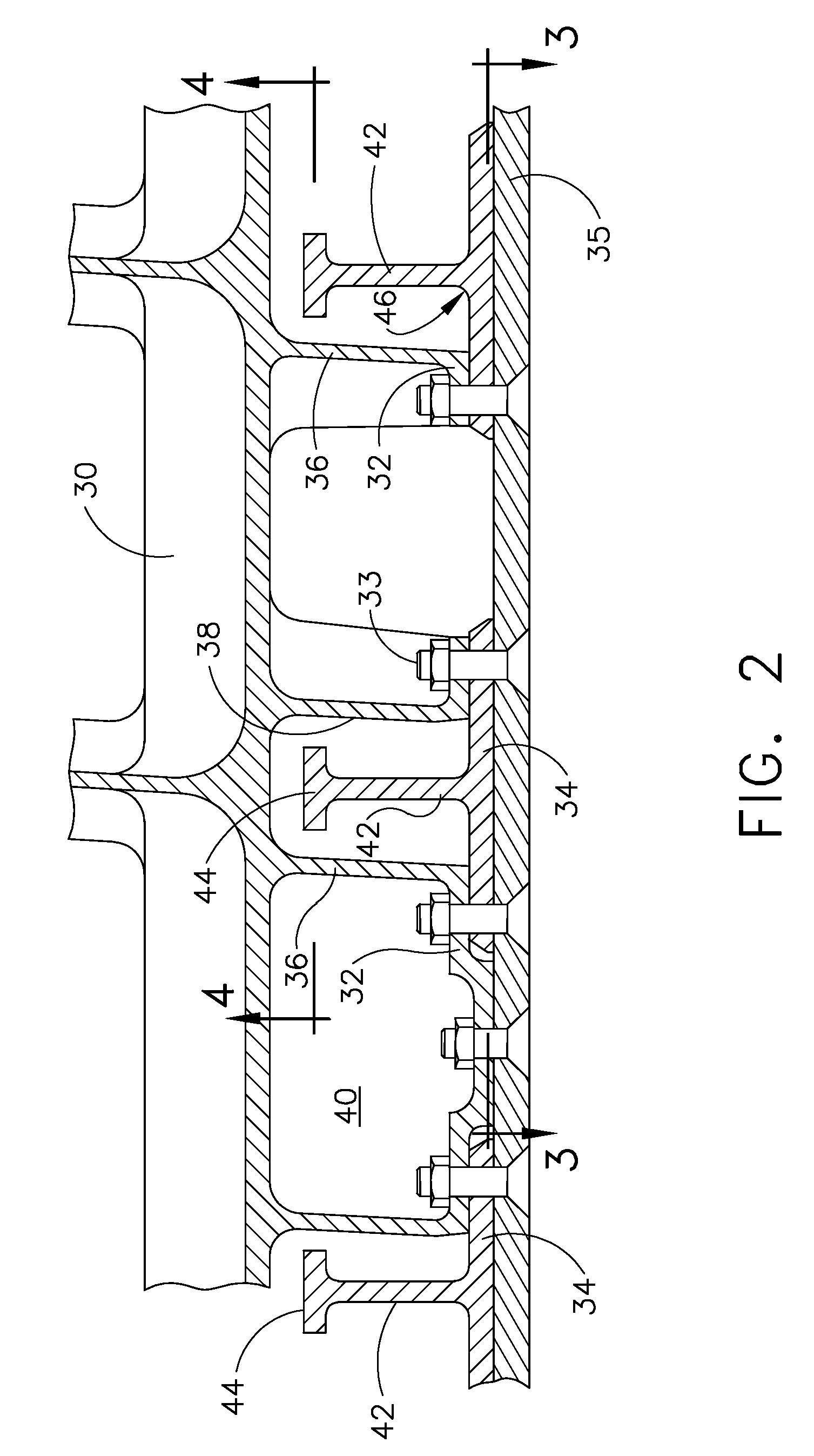Rib support for wing panels
a technology for ribs and wing panels, applied in the direction of fuselages, fuselage bulkheads, transportation and packaging, etc., can solve the problems of a large crushing load on the ribs supporting the wing panels, a large buckling of the upper wing, and a source of costly rework
- Summary
- Abstract
- Description
- Claims
- Application Information
AI Technical Summary
Benefits of technology
Problems solved by technology
Method used
Image
Examples
Embodiment Construction
[0016]As shown in FIG. 2 the present invention provides a wing structure having ribs 30 which are fully shear tied. In the wing skin panels, stringer skin flanges 34 attach to shear ties 32 at an airfoil surface profile created by the rib using bolts or other combination tension / compression load path and disbond arrestment fasteners 33 which also attach the skin 35 for the embodiment shown.
[0017]The ribs are stiffened from the lower wing surface to the upper wing surface. To react to tension load pull off created by the stringer attachment to the shear ties at the ribs, the ribs have gussets 36 surrounding stringer cut aways 38 to help transfer skin panel attachment loads into the web 40 of the ribs while providing pass through of the stringers 42. These gussets act in concert with the rib stiffening for structural integrity of the ribs in conjunction with reacting to the pull off loads. For the embodiment shown in the drawings, the ribs are machined to provide the gussets and cutou...
PUM
 Login to View More
Login to View More Abstract
Description
Claims
Application Information
 Login to View More
Login to View More - R&D
- Intellectual Property
- Life Sciences
- Materials
- Tech Scout
- Unparalleled Data Quality
- Higher Quality Content
- 60% Fewer Hallucinations
Browse by: Latest US Patents, China's latest patents, Technical Efficacy Thesaurus, Application Domain, Technology Topic, Popular Technical Reports.
© 2025 PatSnap. All rights reserved.Legal|Privacy policy|Modern Slavery Act Transparency Statement|Sitemap|About US| Contact US: help@patsnap.com



